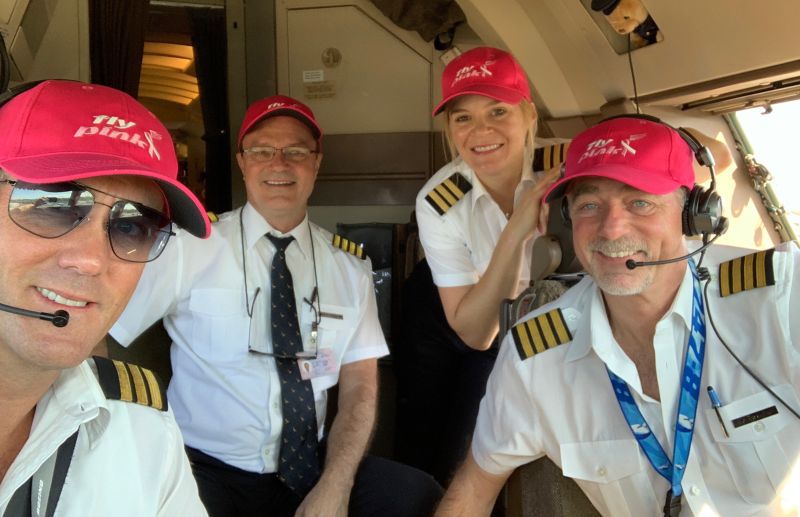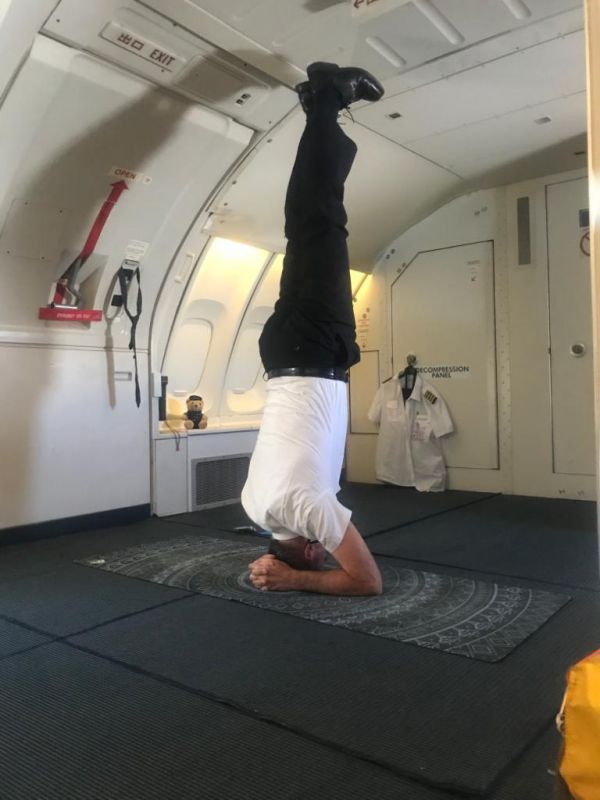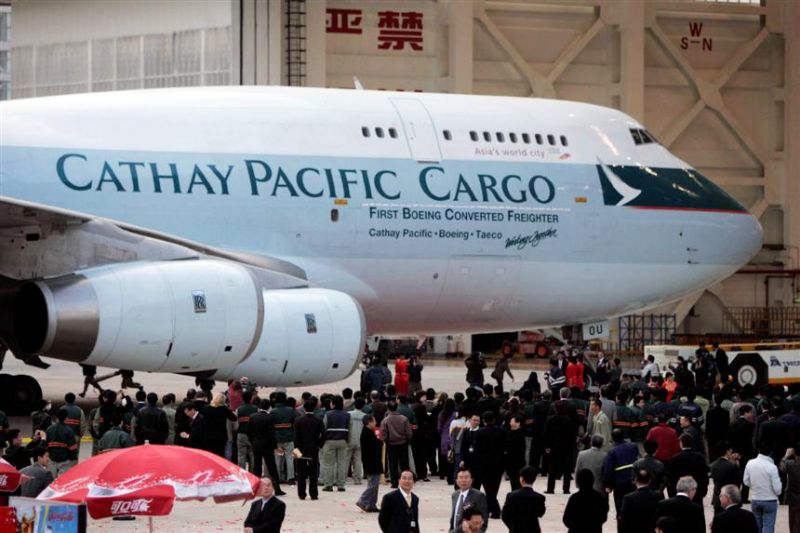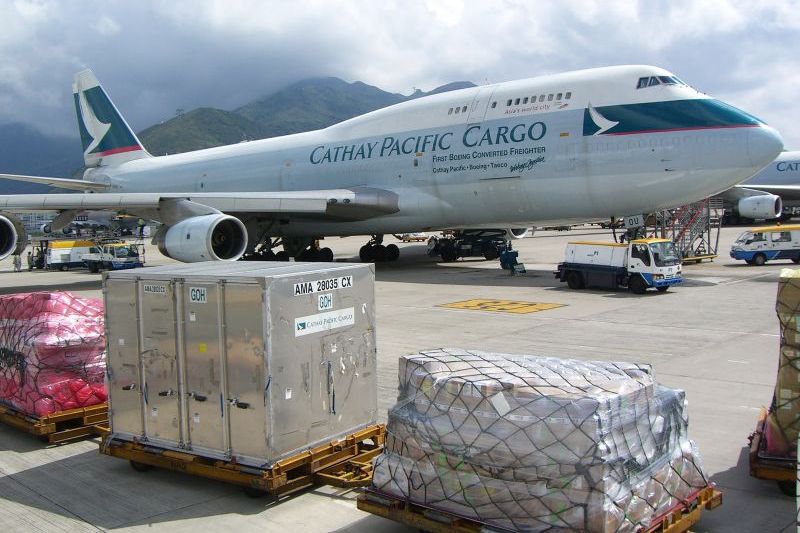Cathay Pacific said farewell to one of its loyal servants in September. B-HUS, the airline’s last remaining Boeing 747-400BCF (Boeing Converted Freighter), left Hong Kong packed to the gills with cargo for its final flight. The aircraft stopped in Anchorage for fuel before flying to Los Angeles to unload and then on to Pinal Airpark, Arizona, where it will be stripped for parts and see out the rest of its days under the desert sun.
The Boeing 747-400BCF retirement flight was led by Captains Martin Cullinane and John Graham, two of Cathay Pacific’s most experienced pilots – and Boeing has also recognised John for being the longest-serving B747 captain. The team was supported by First Officers Dave Lohse, Head of Flight Technical Services, and Suzanne Zwart, and they were also accompanied by two Cathay stuffed bears as mascots.


This flight crew arrangement was necessary – not only to salute two captains nearing the end of their flying careers, but also because Pinal is an uncontrolled airfield. It has a short runway and lacks a control tower or any automatic or visual landing aids. ‘Landing there is quite a challenge, but the flight is an exceptional experience so it’s a privilege to lead it,’ says Graham.
But this landmark journey also served as a revenue flight. ‘We left Hong Kong just 25kg below our maximum take-off weight with cargo destined for Los Angeles,’ says Graham. ‘This meant we had to make a quick splash and dash at Anchorage en route.’
After the stop in Los Angeles – which allowed the crew to get a night’s rest – the aircraft was lighter than it would be for normal operations, as there was no point overfuelling for the one-way, one-hour final flight. But landing a B747 when it’s light can be a tough task. ‘You would think that when a plane is fully loaded and heavy that it’s a handful, but with a B747 the situation is actually the other way around,’ says Graham. ‘When it’s empty, it does not want to land.’

That’s a particularly big challenge with Pinal’s short runway, which is better suited to Cessnas. And as an extra factor of difficulty, there were skydivers in the area jumping at 10,000, 8,000 and 6,000 feet and then drifting back towards the airfield as the 747 made its final approach.
Everyone on the flight deck had to keep an eye out for traffic – both human and aeronautical. Thanks to his experience and a little bit of luck, Graham was able to perfectly guide the aircraft to a safe landing. ‘I was aiming for what we call a positive landing in exactly the right spot,’ he says.
Mission accomplished.
The life of B-HUS
B-HUS was delivered to South African Airways in 1991, where it operated as a passenger aircraft until 2006. Then it was sold on and purchased by Cathay Pacific for conversion into a freighter and delivered in 2006 as B-HUS. In the aftermath of the financial crash of 2008, B-HUS was stored in the desert in California in early 2009 but rejoined service on lease to Air HongKong in 2011, flying in its red and orange livery.
The aircraft returned to Cathay in December 2018 and was painted white ahead of its retirement. The final flight departed Hong Kong on 30 September 2019.

Because BCFs were former passenger aircraft, the upper deck ‘bubble’ is much larger than on purpose-built freighters, which have a galley by the flight deck door, maybe six seats or so for grooms accompanying animals, and then a crew rest area with two bunks. ‘The BCFs were fun for us, as there was an enormous amount of room,’ says Graham. ‘It’s like a 50-yard walk to the galley, so you got some exercise going backwards and forwards for a cup of tea.’
Cathay’s Boeing freighters
The Boeing 747-400BCF (Boeing Converted Freighter) was an upcycling solution for airlines retiring their early Boeing 747-400 passenger aircraft – for Cathay Pacific, it has been 30 years since the B747-400F first joined the fleet. And for cargo operators, it offered a cost-effective way to benefit from the B747-400’s payload and fuel economy compared to first-generation freighters, but without the additional expense and waiting time to get a brand-new B747-400F freighter from the Boeing production line.
Passenger models were flown to Xiamen for a refitting process that included strengthening the main deck floor, fitting the tracks and motors for moving cargo pallets around, welding shut most of the passenger cabin doors and cutting the rear fuselage to fit a cargo door. When compared side by side with a new 747-400F, the BCF was only missing the opening front nose to handle outsized cargo, and had a payload restriction due to the reinforcement work to strengthen the aircraft for heavy loads.
In 2005, Cathay Pacific made aviation history with the first B747-400 passenger-to-freighter conversion aircraft (pictured below). B-HUS was one of 14 purchased by Cathay Pacific to enable it to upgauge its freighter fleet and run them alongside its B747-400ERF (extended range freighters), which were new at the time.










